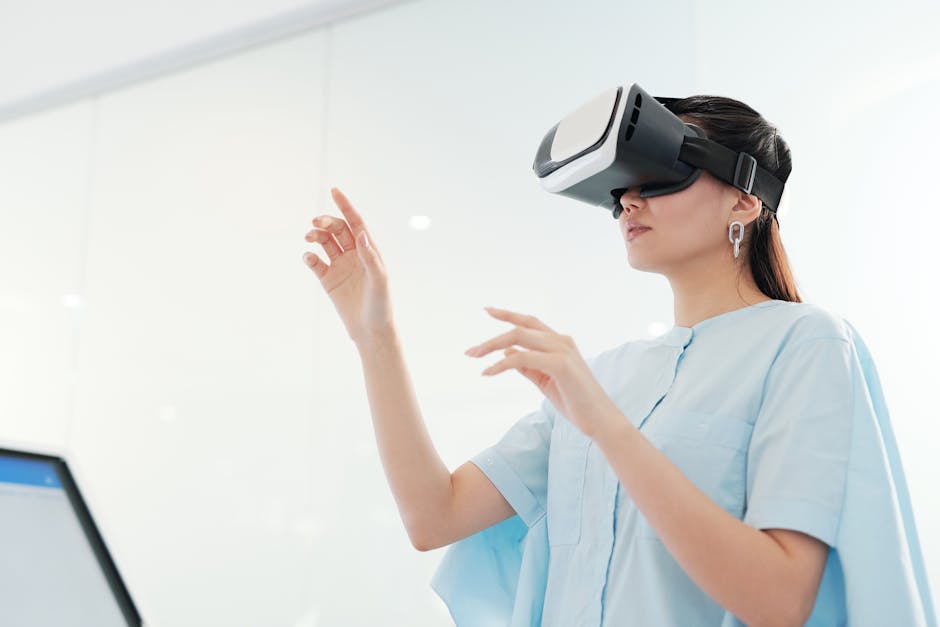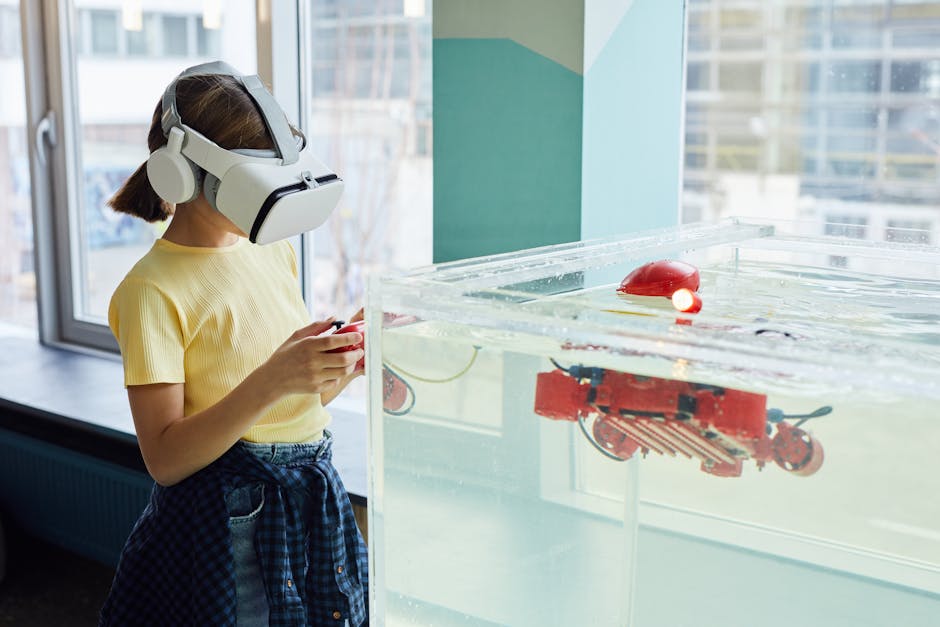Transform Your Remote Collaboration with Virtual Reality Workspaces
In an era where remote work is the norm, the traditional video call just doesn’t cut it anymore. We crave connection, creativity, and engagement—qualities often diminished in two-dimensional exchanges. Enter virtual reality (VR) workspaces: a revolutionary approach to remote collaboration that redefines how teams interact, share ideas, and drive innovation. By immersing ourselves in these digital realms, we can create experiences that are not only more productive but also far more enjoyable.
What Are Virtual Reality Workspaces?
Virtual reality workspaces are fully immersive digital environments designed for collaboration, communication, and creativity. Utilizing VR technology, these spaces allow users to interact with one another and their work in an entirely new way. With VR headsets, participants can engage as avatars in 3D environments, transforming mundane meetings into vibrant discussions in virtual conference rooms or brainstorming sessions in lush landscapes.
Imagine attending a strategy meeting with colleagues from across the globe, all gathered in an elegant virtual boardroom. You can manipulate 3D graphs, share digital whiteboards, or even participate in activities that foster team-building—all designed to increase connection and collaboration.
Why Virtual Reality Matter for Remote Work
As the remote work trend continues to grow, the need for effective collaboration tools becomes even more pressing. Virtual reality workspaces address common challenges associated with remote teamwork, such as disengagement, miscommunication, and lack of motivation. Key reasons VR workspaces are worth considering include:
Enhanced Engagement
Virtual reality environments are inherently designed to be more engaging than standard video conferencing. Research from PwC indicates that participants in VR training sessions are four times more focused than in traditional online learning formats. By creating an interactive atmosphere, VR encourages more meaningful interactions and allows team members to collaborate more effectively.
Improved Communication
Miscommunication is a common pitfall in remote work settings. VR workspaces allow users to express emotions and body language that often get lost in video calls. By adopting avatars and immersing themselves in shared experiences, team members can better understand non-verbal cues, fostering stronger connections and clearer communication.
Facilitated Creativity
Workspaces in VR can be tailored to be visually stunning and imaginative, which can inspire creativity. When surrounded by stimulating environments—such as serene nature settings or futuristic cityscapes—team members may find it easier to think outside the box, leading to innovative solutions and ideas in their work processes.
Overcoming Geographical Barriers

With teams scattered across cities and continents, VR workspaces break down geographical barriers, enabling effortless collaboration. Whether you’re in New York, London, or Tokyo, you can gather in a virtual space as if you were sitting in the same room without the hassle of travel.
Tools for Virtual Reality Collaboration

Several tools and platforms are paving the way for virtual reality office spaces, making them accessible to businesses of all sizes. Here are a few notable options:
Oculus for Business

Oculus for Business harnesses the technology behind the popular VR headset Oculus Quest, offering enterprise-level solutions for teams. The platform allows businesses to customize VR environments, promote training, and enhance collaboration. It integrates seamlessly with existing software, letting organizations harness VR capabilities without major overhauls.
Engage

Engage is a powerful platform that can host meetings, conferences, and training sessions in immersive virtual environments. It adds a twist to collaboration, enabling users to interact through avatars in shared spaces, participate in interactive 3D activities, and even record sessions for later viewing.
Spatial

Spatial focuses on creating realistic 3D workspaces that mimic a physical office experience. Users can turn any space into a VR collaboration hub by using their smartphones or VR devices. The platform's AR capabilities also allow for collaboration not just in a virtual space but concurrently with the real world, enabling users to interact with physical objects during meetings.
How to Get Started with Virtual Reality Workspaces

Embracing virtual reality for remote collaboration requires some planning and setup. Here’s a roadmap to initiate your journey:
1. Assess Your Team’s Needs

Before diving into VR, identify the specific needs and goals of your team. Are you primarily looking to enhance creativity during brainstorming sessions, or is the focus more on improving communication? Understanding these requirements will guide your choice of platform and VR tools.
2. Choose the Right Hardware

Investing in compatible hardware is essential. Popular VR headsets such as Oculus Quest 2 or HTC Vive have different price ranges and functionalities. Ensure the chosen headset aligns with your team’s capabilities and the specific application you intend to use for your workspaces.
3. Select a VR Platform

Research the available platforms and choose one that fits your team’s workflow. Use their free trials to experiment and discover what will best serve your collaboration needs, from casual meetings to structured workshops.
4. Develop VR Etiquette

As with any new meeting format, establishing best practices and etiquette is crucial. Guidance on how to interact within a VR space, the appropriate times to speak, and how to use certain tools can help your team adapt to this new environment more quickly.
5. Foster Engagement

Encouraging participation is key to maximizing the benefits of VR workspaces. Plan engaging activities—like icebreakers or virtual team-building exercises—to promote camaraderie and comfort among team members in this new space.
6. Monitor and Adapt

As your team uses VR workspaces, gather feedback and analyze engagement levels. Continuously adapt your approach based on what works and what doesn’t. Stay informed about new developments in VR technology as this field is ever-evolving.
The Future of Remote Collaboration

As we look ahead, virtual reality workspaces are set to redefine how we collaborate remotely, breaking down traditional barriers and ushering in a new era of connection. As the technology matures, we can anticipate enhancements that will make these spaces even more intuitive and immersive.
Trends to Watch

-
Integration with AI: As artificial intelligence (AI) continues to advance, we can expect AI to enhance the capabilities of VR workspaces, from natural language processing in meetings to intelligent assistants that streamline workflows.
-
Hybrid Work Environments: The future may see a blend of remote and in-office work, pushing the development of hybrid VR environments that accommodate both virtual participants and those who are physically present.
-
Enhanced Comprehension Tools: The emergence of tools that provide real-time translations and transcriptions during virtual meetings can foster inclusivity for global teams, further breaking down language barriers.
-
Focus on Mental Well-being: With the increasing awareness of mental health in the workplace, VR can also serve as a powerful tool for mindfulness and stress reduction, providing virtual spaces conducive to relaxation.
Final Thoughts

Virtual reality workspaces represent an exciting frontier for remote collaboration, taking everyday interactions to immersive, engaging heights. By replacing static video calls with dynamic, interactive experiences, teams can enhance communication, foster creativity, and redefine how we perceive collaboration in the digital age.
As we continue to adapt to the changing landscape of work, investing in VR technology may just be the key to unlocking a new level of teamwork and productivity. Your journey into this fascinating realm can start today—embrace the change and watch your collaboration flourish in ways you never thought possible.
Further Readings
- Explore the impact of tech on our online identities with this detailed overview.
- Discover how mindful tech practices can foster well-being with Digital Minimalism.








